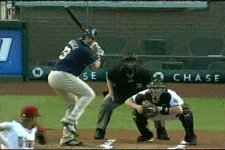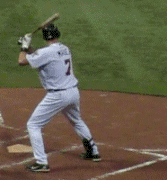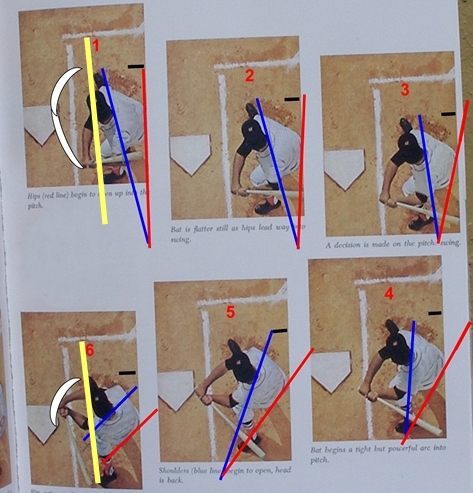- Oct 12, 2009
- 1,460
- 0
Adrian Gonzalez has a vertical bat. Here's another view of Gonzalez:

LOL.
It's only vertical if you're unable to think in three dimensions.
I figured that was what was going on, but I wasn't sure.
No, Mauer is at 45 degrees.

It makes no difference where the barrel is. It's getting from vertical to flat, from tipped to flat, from 45 degrees to flat. All high-level hitters turn it. Gonzalez goes from vertical and tipped... he turns the barrel. Mauer turns it. Morneau turns it.
90 is vertical, and 45 != 90.



